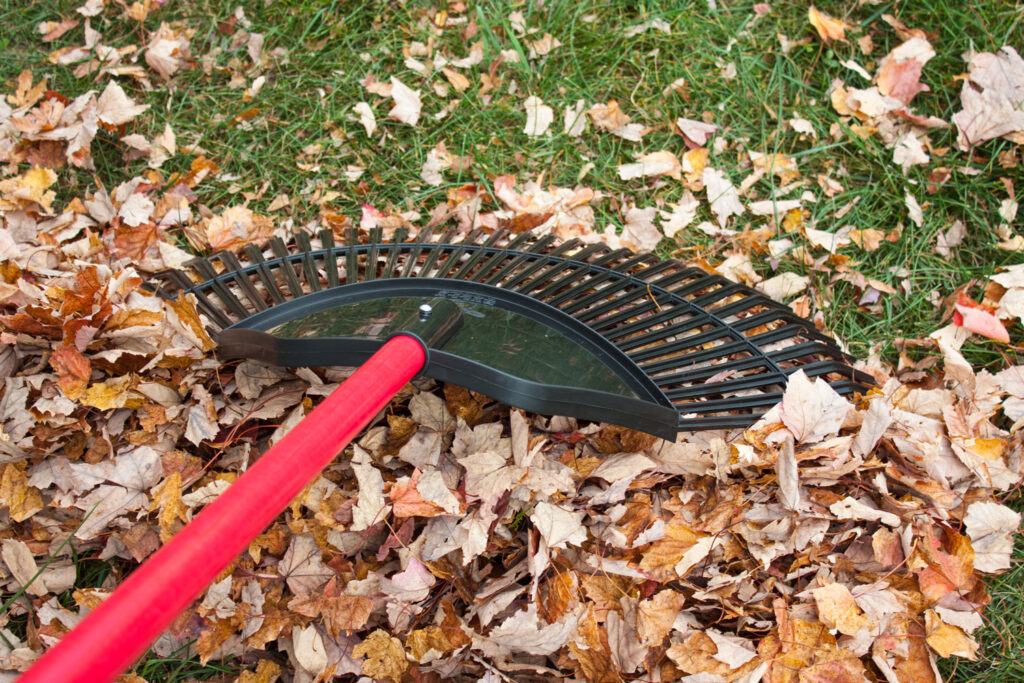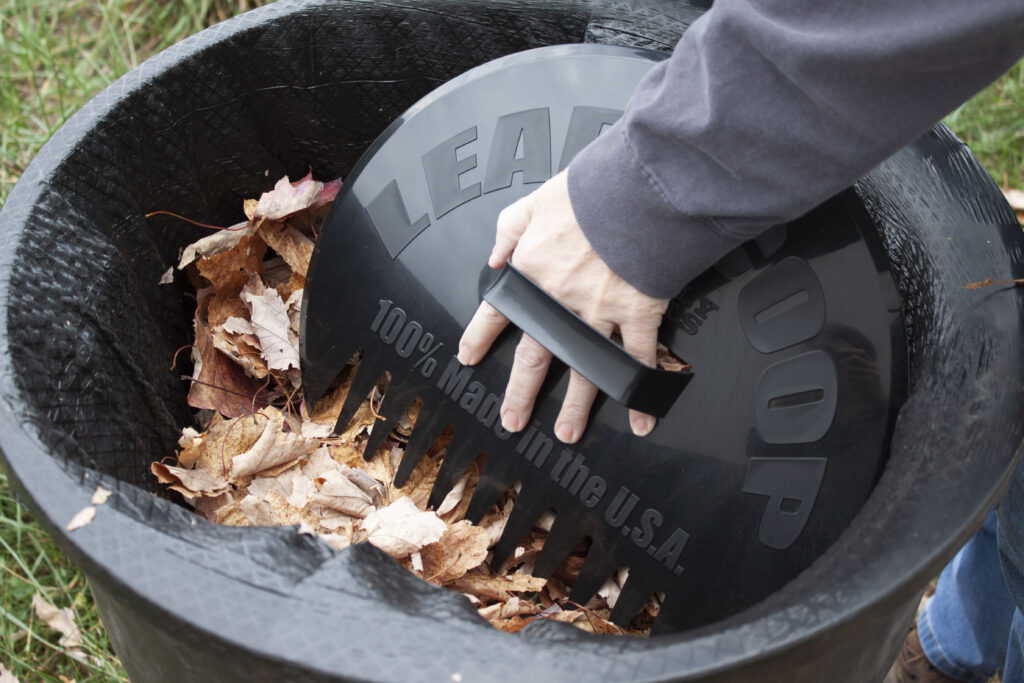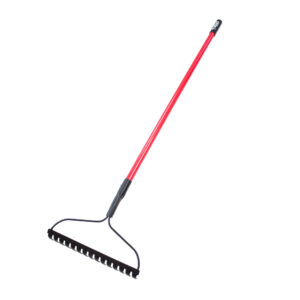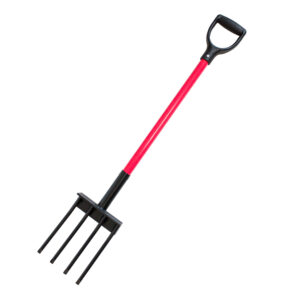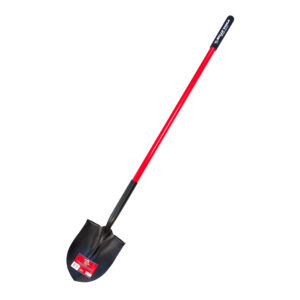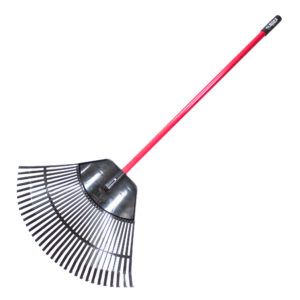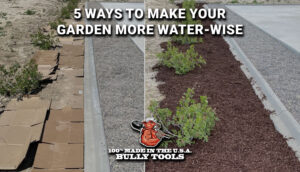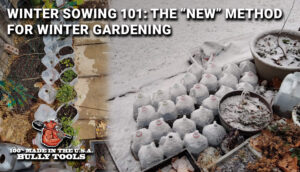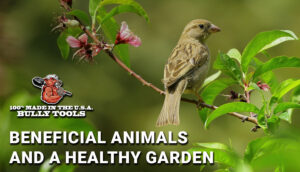How to Transition Your Lawn from Summer to Fall
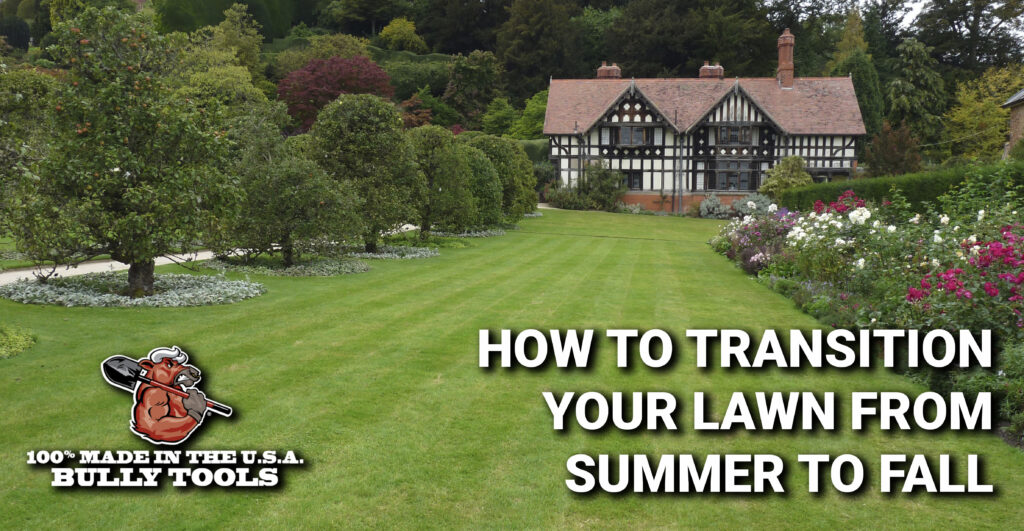
With summer dwindling down, it’s time to start thinking about how to prepare your lawn for autumn. Autumn is the best time to treat your grass because the cool temperatures allow the perfect environment for grass to recover, rejuvenate, and prepare itself for winter. If you want a lush, green lawn come next spring, it’s vital that you take care of it now before its dormant season.
Here are our tips on how to get your lawn prepared for the fall.
1. SERVICE YOUR LAWN EQUIPMENT
In autumn, you should clean, sharpen, and prepare your lawn equipment for winter storage. Make sure to remove any stuck-on mud or dirt that will weigh the tool down, and safely sharpen any blade so that you can complete quick, accurate cuts. If you’re worried about your tools rusting, make sure that the shed or area that you keep them in is cool and dry. Lawn and garden tools are highly susceptible to rust because, throughout the seasons, they are used, wiped down, and possibly caught in precipitation of dewy ground. Excess moisture can and will lead to rusting, so be sure to thoroughly dry all of your equipment before putting them away and try to store the tools vertically so any moisture can be expelled.
Lawn tools aren’t cheap, so do your best to keep them in good working condition.
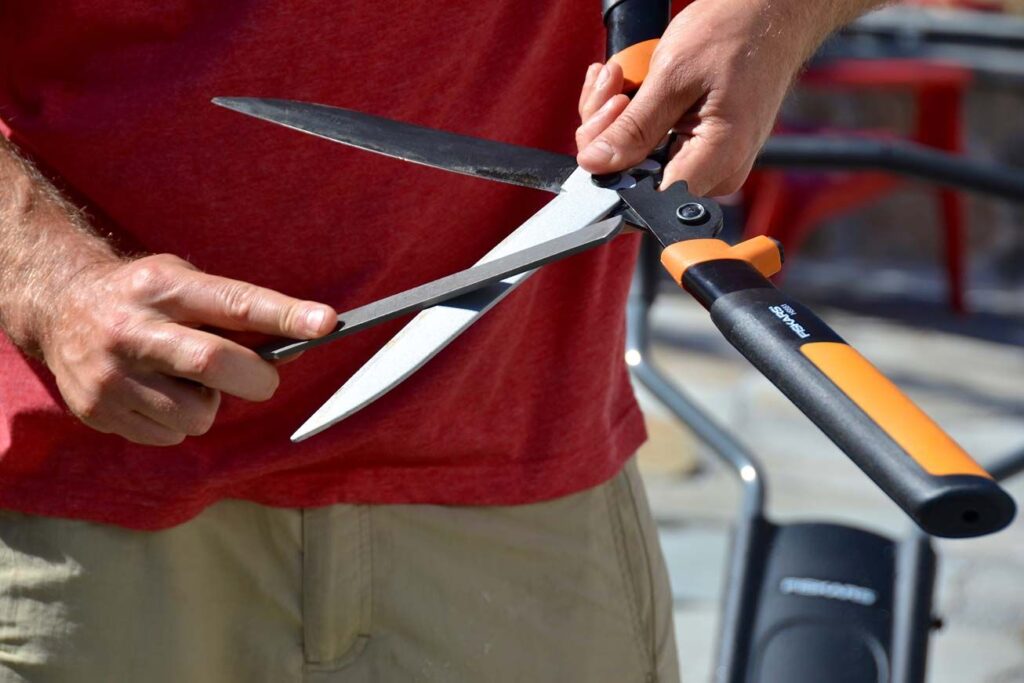
2. GET RID OF DEAD BRANCHES, ANNUALS, AND LEAVES
Dead branches, annuals, and leaves can clutter your yard in the autumn and be and can accumulate rapidly if left too long. If you live in a cool weather region, you’re bound to see a flurry of red and orange leaves come October, and if your home is surrounded by trees, chances are you’re used to raking a pile or two during that time.
While the dead leaves covering your lawn can be pretty to look at, your grass would prefer not to be covered. Some leaf accumulation is okay – about 20% coverage should not do any extreme damage – but a layer of leaves prevents direct sunlight from reaching the soil and moisture from evaporating. The real danger of letting leaves sit for too long is grass damage or death. If those patches become snowed on and forgotten until spring, the sod underneath would surely become wet and decayed. So, if you don’t want to have to replant grass every spring, make sure you keep up with the collection of leaves on your property.
And if you have an abundance of leaves in your backyard, chances are you also have plenty of fallen branches lying around as well. Much like leaves, if branches are left on the ground until spring, they’ll kill the grass underneath. Plus, large branches pose a hazard to humans and pets, are uncomfortable to walk on, and clutter your lawn.
Also, be sure to pitch any dead annuals. These can be an eyesore, and if you remove them in the fall, you can get straight to replanting come spring.
3. KEEP MOWING
You should continue to mow your grass until your region experiences its first serious frost. By winter, cold-weather grasses, like the ones grown in the Northeast and Midwest, will turn dormant. Dormancy does not mean that your grass is dead, though it may lose its green color and turn brown. When this occurs, your grass will not grow, so there’s no need to cut it.
Until that occurs, you should mow regularly. Mowing often is another way to control leaf accumulation. You can mulch leaves and leave them to enrich your lawn.

4. PLANT TREES, SHRUBS, AND LATE-SEASON PERENNIALS
Now, if you realized this summer that your yard is lacking some serious privacy, there is no better time than autumn to plant new trees and shrubs. According to the Arbor Day Foundation, the benefits of fall planting include cooler temperatures, ample rain, and an extended growing season. You may think that it sounds counterintuitive to plant right before winter, but actually, it allows the roots of a young tree or shrub to become fully established before the next growing season. In cool-weather regions during winter, foliage goes dormant as trees use the energy they stored throughout the summer and fall to survive. During winter, your grass may look slightly brown, your trees will lose their leaves, and overall, your natural landscaping will look a bit dull. However, this does not mean that your plants are dead. In fact, if you care for them correctly, your plants should grow fuller and stronger every year that they are in the ground.
By planting trees, shrubs, and late-season perennials in the autumn, you can save yourself a lot of time trying to ready your landscape come spring, and not only that, but you will also have cooler and more comfortable weather conditions to work in during the fall.
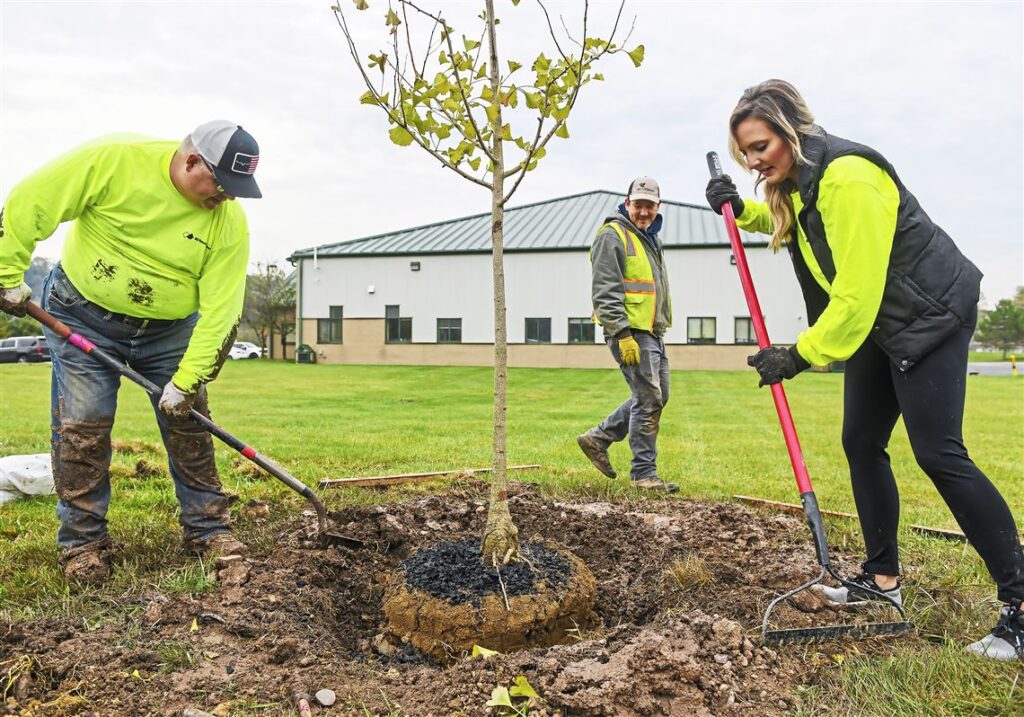
5. SEED BARE GRASS SPOTS
Autumn is also a great time to reseed bare grass spots. The cause could be anything: poor soil conditions, insect and grub damage, excessive foot traffic, or dog urination in that one area, but the area is not likely to regenerate on its own.
It’s best to reseed on a day when your soil is moist (but not wet!) like the day after a rainstorm. Having a little moisture in the soil will make it easier to work with.
If you need to reseed, follow these 7 simple steps:
- RAKE – Rake the area and remove any rocks, debris, or dead grass from the area using a garden rake (our 16″ Bow Rake is perfect for this job!)
- LOOSEN SOIL – Next, loosen the soil with a spading fork, shovel, or steel-tined rake to break up the existing earth and to prepare it to be mixed with seed and soil amendments.
- AMEND SOIL – Add at least 2 to 3 inches of compost or loamy soil to the bare grass patches a mix with the existing soil. Compost is organic material commonly found in everyday waste like food scraps and lawn trimmings that if composted and placed around a plant properly, encourages the growth of beneficial bacteria and fungi and enriches soil which will aid in your plants’ growth. Loam refers to an ideal soil texture that is comprised of equal parts sand, silt, and clay. It holds moisture but drains well, allows oxygen to reach all parts of a plants’ roots, and is rich in organic material. The choice of additive is yours, and both work incredibly well to rebuild soil and plant nutrition.
- SPREAD SEED – Spread your grass seed over the bare patches. The seed should be sprinkled heavily enough to fully cover any bare spots but not too heavy where you see seeds piling up on top of others.
- RAKE SEEDS – Gently rake the grass seed into an even layer. If some additive or soil is raked into the seed, don’t worry. It won’t adversely affect the final result, and it provides some protection to the seed.
- WATER – Seed patches will need to stay moist to germinate. Lightly water the bare spots daily, but if you’re worried that excessive heat might dry up your seed, you can cover the area in burlap to protect it from the sun.
- MOW WHEN READY – Your new grass patches will grow at their own speed, and until the color of the new spades matches the rest of your lawn, leave them to grow. Mow around your seed patches until you notice that it has blended with the rest of your grass, about 7 weeks after sowing.
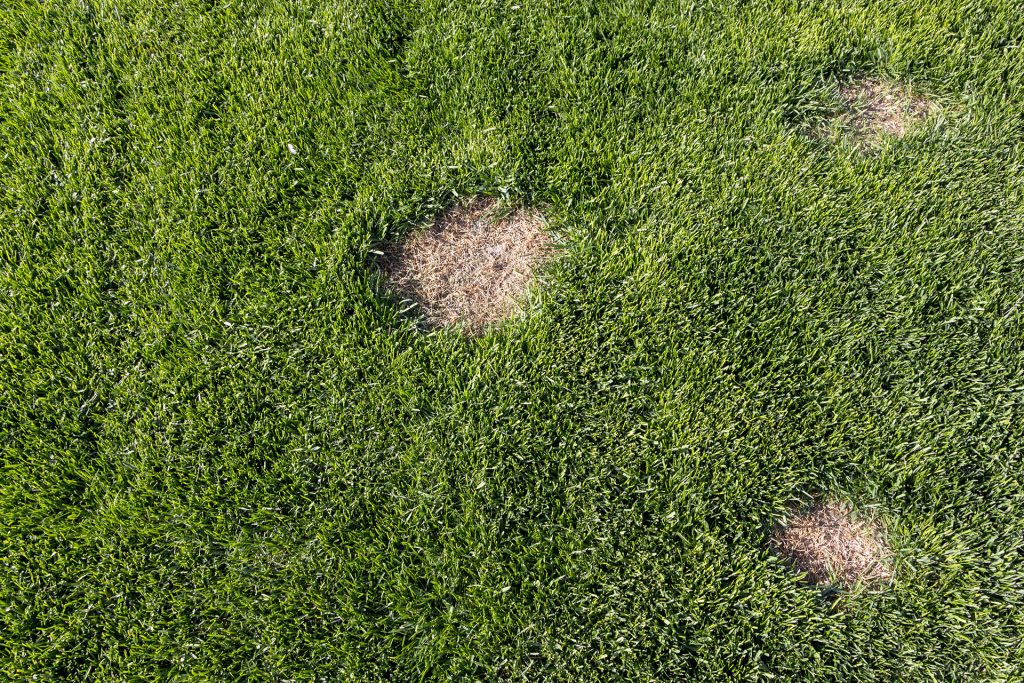
6. FERTILIZE
If you want to prepare your lawn for winter and prepare it to have a strong, healthy spring, you should fertilize in the fall. Fertilizers are comprised of three main nutrients: nitrogen, phosphorous, and potassium. Make sure to pick up a grass-specific fertilizer to achieve the best results. According to The Fertilizer Institute, nitrogen is the most important nutrient and the most absorbed nutrient in fertilizer. Nitrogen’s role is important in forming protein which the plant will need to build tissue and are responsible for providing plants with their lush green color. Phosphorus protects your grass against disease and drought.
When selecting which commercial lawn fertilizer to purchase, first make sure that it has a NPK ratio that suits your grass species. Then, you have to decide between organic and synthetic fertilizer – and between liquid or granular formula. Organic fertilizers like peat moss take a little longer to work than synthetics, but they are far more environmentally friendly and provide long-term benefits to your grass’ soil.
Synthetic fertilizers are derived from a mix of minerals, gases, and waste, and when absorbed, they increase the soil’s nitrate levels. Nitrate has been linked to the contamination of water sources and aquatic ecosystems, as well as plant, pet, and human poisoning if ingested directly.
Liquid fertilizers come in a powder or concentrated liquid form, while granular fertilizers come in a dry, pellet form. The former option should not be applied directly to soil in either its powder or concentrate form; it should always be mixed with water per the instructions on the container. This form is dangerous if used to cover a vast area, but if you use it sparingly and just to encourage a bare grass spot to grow, the public health risks are low.
Granular fertilizer, again, produces slower results than a liquid fertilizer, but it doesn’t pose the same environmental threat as the liquid option to cover either large or small areas. It is also the best option if you’re looking to increase the longevity of your grass and not just quick results.
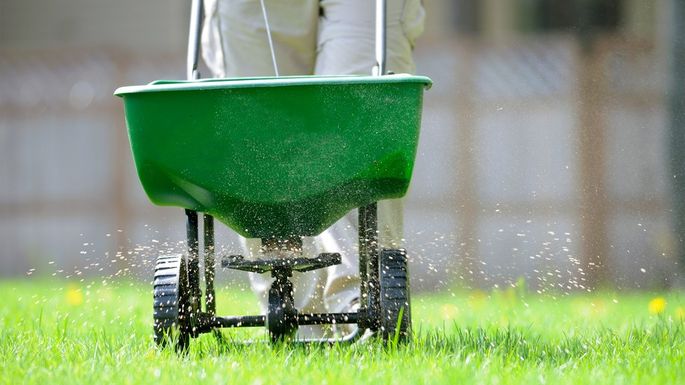
7. KEEP WATERING
In autumn, you won’t have to worry as much about consistent and concentrated watering as you do in the summer. With the scorching heat gone, your garden plot slowing in production, and cool rain showers, your established trees and shrubs will survive mostly on their own. If you notice slower growth, wilting, or loss of color, lack of moisture could be the cause and more attentive watering could change that.
Be sure to still water any new annual plants that you added recently. The shallow root systems will be thankful for the extra moisture – about an inch every week – and you’ll see the results in the form of a healthy, strong plant come next spring. In a few months’ time, around December, the ground in cool climate regions like ours will begin to freeze. When that time comes, watering isn’t necessary. Plants will begin to hibernate and feed off of the water they stored in the fall.
And an overall plus about watering in the fall is that you don’t have to water at any specific time. When temperatures are high, especially during the middle of the day during summer, water can evaporate off of a plant before it is absorbed by the soil. Once the temperatures cool down, an effective mid-day watering is possible.
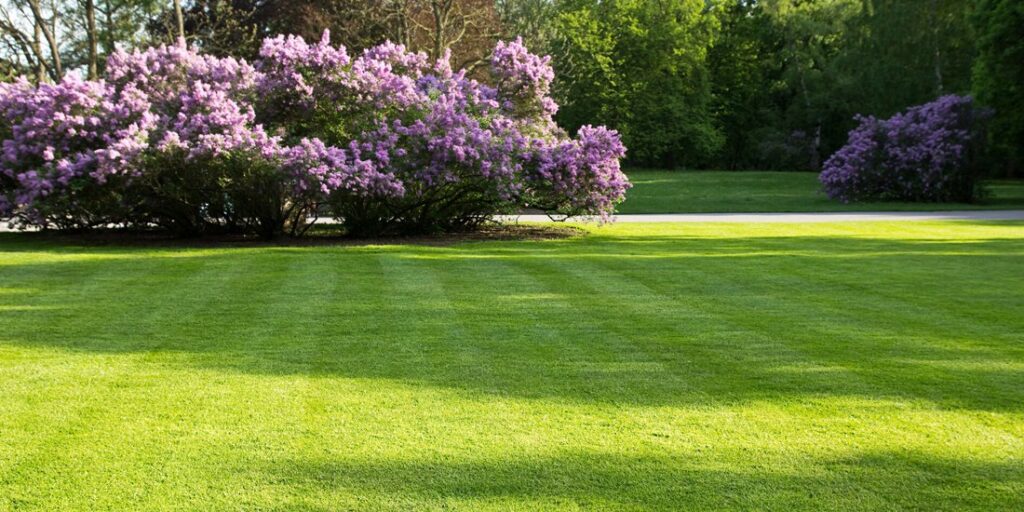
8. AERATE
Aeration is beneficial for a lot of reasons, and if you live in a cool weather region with cool-season grass, autumn is the time to loosen it. Your lawn’s root system is shallow but wide and is comprised of thousands of intertwining roots. Aerating involves creating holes or removing small, coil-shaped pieces of soil and grass from your lawn, and this process allows new pathways for sunlight, nutrients, and water to reach your grass’ roots.
It’s recommended that homeowners aerate their lawns annually to encourage their long-term health, and it’ll only take a short time to do. You can either rent or borrow an aeration machine, or you can use a manual lawn spike or coring aerator. If you opt for a manual corer, the soil pieces break down over and renourish the earth, while the spiking method loosens soil with less of a mess. Our Bully Tools Spading Fork is a great option for quick aeration.
Aerating also reduces thatch accumulation. Thatch is a layer of organic material that sits between the soil and the crown of the grass spades, and too much thatch can negatively affect the growth of your lawn. The organic material includes both living and dead stems, roots, crowns, and stolons that collect over weeks and months into a bound layer. Dethatching and aerating are two different principles, but aeration aids in removing built-up thatch and is effective in revitalizing your lawn.
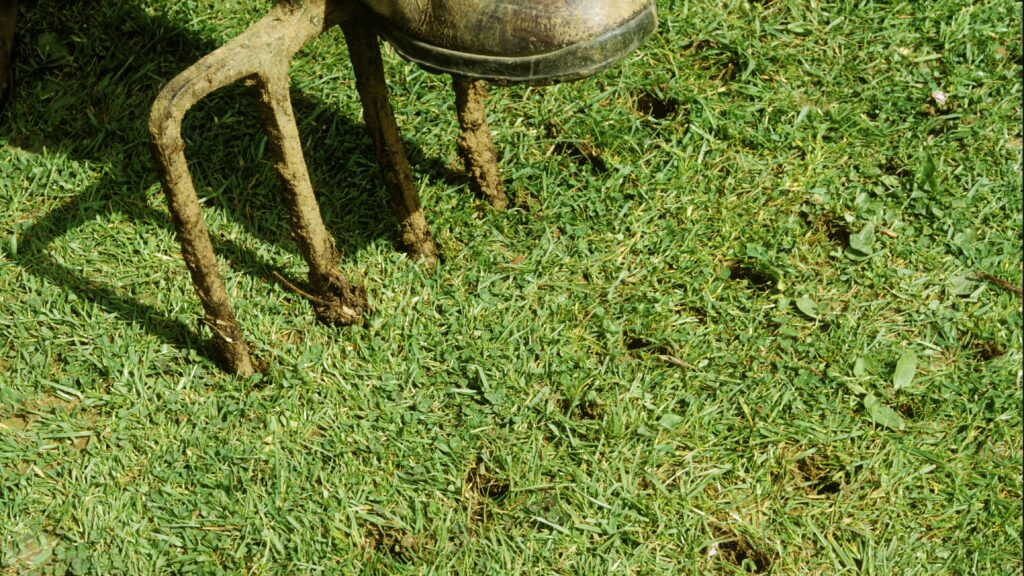
Prepare your lawn for its impending dormant season by giving it a refresh before winter. Once the ground freezes, your soil will not respond to any additives and is much tougher to loosen. Take the time now to prepare your lawn for next spring, and once April rolls around, you’ll be thankful that you did.
And, let 100% Made in the USA Bully Tools help you accomplish whatever lawn amendment projects that you have planned this fall with our full selection of high-quality hand tools. We make tools that work hard so you don’t have to.


